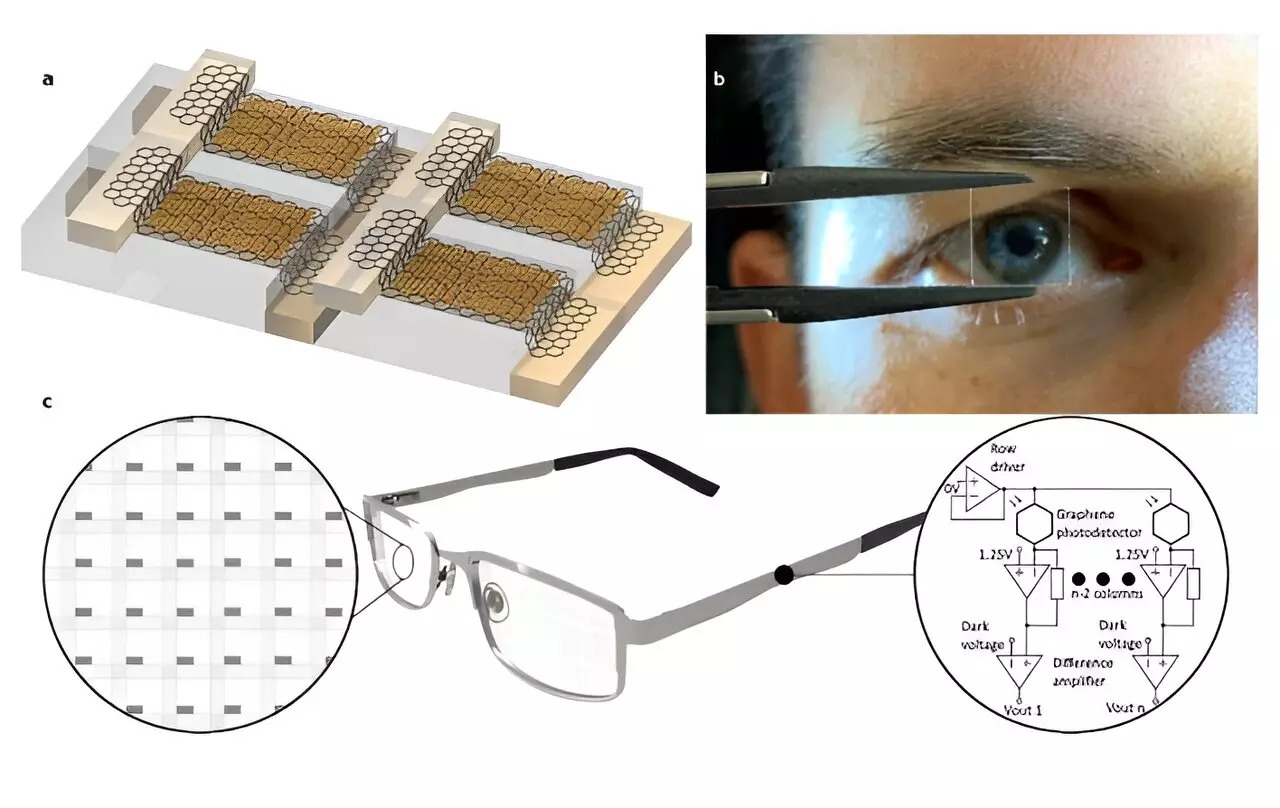In a breakthrough development, a team of engineers at The Barcelona Institute of Science and Technology’s ICFO–Institut de Ciències Fotòniques has successfully created a nearly transparent camera for eye tracking purposes. This innovative camera opens up a world of possibilities for applications such as virtual reality helmets, automotive assistance devices, and advertising tracking. Traditionally, one major obstacle in eye tracking technology has been the obstruction of the user’s view by devices placed in front of the eyes.
The engineers in Spain have managed to overcome this challenge by designing a camera that is nearly invisible to the naked eye. The key component of this camera is a photodetector created by incorporating small dots of lead sulfide into sheets of graphene. When these dots are hit by photons, they emit electrons that flow through the layer of carbon atoms, generating a current. This innovative design allows the camera to be highly transparent, with the ability to pass up to 95% of light through it.
The team conducted various tests to evaluate the performance of their camera as an eye tracker. By projecting greyscale patterns onto the photodetector and comparing the output with a standard image sensor, they were able to determine the effectiveness of the device. The results were promising, with the camera demonstrating a refresh rate of 400Hz, double the speed required for producing reliable imagery.
Despite the success of their invention, the researchers acknowledge that there are still hurdles to overcome before the camera can be applied to standard eyeglasses or contact lenses. One limitation is the absence of a lens in the photodetector, restricting its functionality to projected images. Additionally, the processing of imagery and the integration of a power source for the processor are areas that require further development.
The creation of a nearly transparent camera for eye tracking represents a significant leap forward in the field of technology. This groundbreaking innovation has the potential to revolutionize various industries and enhance user experiences in countless applications. While there are challenges to address and improvements to be made, the future looks promising for this transparent camera and its impact on eye tracking technology.


Leave a Reply